Jethro Tull is undoubtedly among the greatest progressive rock acts of all time. Founded in 1967 as a blues outfit, the group—dominated by flautist/vocalist/guitarist Ian Anderson and guitarist Martin Barre, with numerous other remarkable players rounding out multiple line-ups over the years—now ranks as the most influential progressive folk band of all time (which isn’t to undermine the importance of peers such as Fairport Convention, Steeleye Span, Gryphon, Strawbs, and Pentangle, among others). Blending complex arrangements and song structures with warm English timbres, fetching melodies, and humorous yet boldly germane cultural/social storytelling, their impact can be felt not only on modern stylistic siblings like the Decemberists, Big Big Train, Unitopia, and Ayreon, but on the entirety of popular music as a whole.
In celebration of their legacy (which commercially began with the release of 1968’s debut LP, This Was), Rhino/Parlophone Records is issuing a three-disc retrospective of their discography (with selections chosen by Anderson). What better opportunity, then, to propose my own breakdown of their best albums (in conjunction with David Chiu’s recent interview with Anderson, of course)? From multilayered masterworks and radio hits to biting remarks on religion, parenting, and love, these are the crème of the crop when it comes to Jethro Tull’s cumulative cups of wonder.
Note: Although lists like this are intrinsically comprised from personal preferences, they inevitably lead to vehement reactions from devotees, so feel free to respectfully share your thoughts on my top picks in the comments below. Also, while Jethro Tull did exceptional work into the ’80s and ’90s, few fans would deny that their utmost influential and impressive era was the 1970s, so it’s no surprise that those are the records highlighted below.
6. Benefit (1970)
Released less than a year after Stand Up, Jethro Tull’s third studio album—their first with keyboardist John Evan and last with bassist Glenn Cornick—is the best of the early bunch. More focused, sundry, and daring than its predecessors, it saw the quartet move away from the bluesy bounciness of its predecessors and towards a heavier, catchier, and overtly darker rock sequence in which just about every inclusion is a classic.
While traces of their prior sound remain on a few entries—namely, the gorgeously penitent “Nothing to Say”, the playfully reserved “Inside”, and the gruffly dense “A Time for Everything?”—several songs suggest a progression towards later styles. For instance, both “To Cry You’re a Song” and “Son” hint at the razor-sharp punch that would permeate Aqualung (the latter also brilliantly alludes to the many-sided scores and cerebral storytelling of later epics). Elsewhere, opener “With You there to Help Me” and the subsequent “For Michael Collins, Jeffrey, and Me” merge morose acoustic ballad and enticing rocker very well, while the US-only “Teacher” conjures the infectious flute dominance of later gems within Jethro Tull’s most beguiling single yet. Above all else, Benefit is a strong transitional album that that still stands as one of their finest in terms of pure songwriting and overarching consistency.
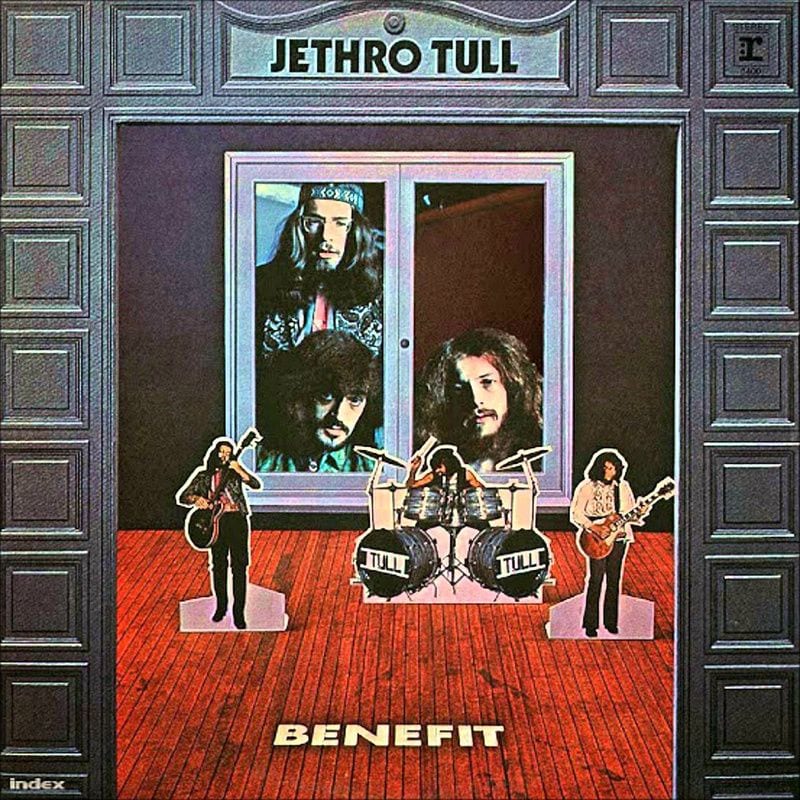
5. Minstrel in the Gallery (1970)
After receiving poor reception for 1973’s A Passion Play (more on that in a bit), Jethro Tull decided to scale back the track lengths on the follow-up collection, War Child. While still a very good effort, it felt a tad regressive as well, which is why 1975’s Minstrel in the Gallery was such a delight. Packing fuller and lengthier compositions, it was a robust callback to their epic golden regality and a testament to how well Anderson and company could still infuse extended arrangements with top-notch melodies and lyricism.
“Cold Wind to Valhalla” and “Black Satin Dancer” are certainly sufficient vocally, yet it’s their jubilantly feisty and spiritedly rugged instrumentation, respectively, that really entices. Later, however, Anderson pens three of his most serenely commanding acoustic odes with “Requiem” “One White Duck / 010 = Nothing at All”, and coda “Grace”, each of which unite tender singing, poetic sentiments, and delicate orchestral accompaniments to completely captivate.
Of course, the true standouts of the Minstrel in the Gallery are its bookend suites, the title track and “Baker St. Muse”. The former entrances with its theatrical opening and impeccable evolution from charming folk chronicle to full-blown progressive rock outburst (featuring some of the most hypnotic sophistication the band ever achieved, with Barre’s unparalleled edge leading the charge). As for the nearly seventeen-minute finale, it essentially packs the same level of conceptual continuity and intertwined narrative/structural excellence—with plenty of mesmerizing shifts between sections—that made their prior two single-song LPs benchmark opuses. Be it the symphonic pleasures of its early fragments, the fanciful intermission of “Nice Little Tune” or the somber segues of its latter half, “Baker St. Muse” condenses the accessible warmth of 1972’s Thick as a Brick and the arresting chill of 1973’s A Passion Play into a far shorter tour-de-force. As a result, it—like its older siblings—stands as a superlative entry in the entire genre.
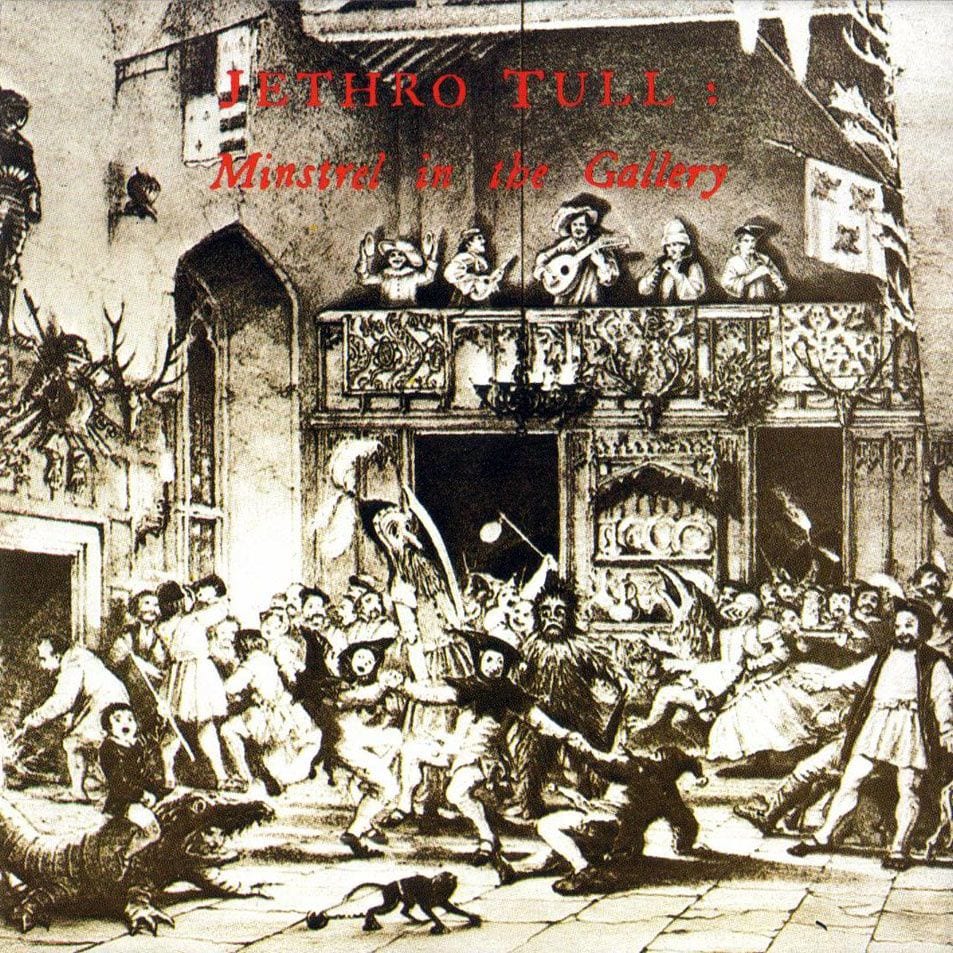
4. Songs from the Wood (1977)
Often considered the first of Jethro Tull’s formal folk rock trio (rounded out by successors Heavy Horses and Stormwatch), 1977’s Songs from the Wood found the group reducing their contemporary hard rock power in favor of welcoming pastoral splendors and legends. More specifically, it presented them combining the simple yet engrossing songwriting flavor of Benefit and the intricate grandeur of Minstrel in the Gallery with an increased emphasis on countryside elegance, culminating in their most lusciously endearing release thus far. (Even the album cover is appropriately rustic and calming.)
Naturally, the title track is among their most impressive feats, with its opening portion evoking the harmonious vocal rows of Gentle Giant. From there, the piece remains wholly inviting as the band scurries around some very tricky rhythmic changes and counterpoints, infusing each moment with striking movements and idyllic textures. Similar complex contrasts also permeate later standouts (the slightly experimental “Pibroch (Cap in Hand)” and the gleeful “Velvet Green”), yet it’s the ways in which multifaceted festiveness and ominous undertones carry throughout the album—and often within the same song, as on the energetic “Hunting Girl” and haunting “The Whistler“—that make Songs from the Wood truly shine. Couple those enchantments with the joyful catchiness of “Cup of Wonder” and wistful allure of closer “Fire at Midnight” and you have the ultimate Jethro Tull forest fairytale.
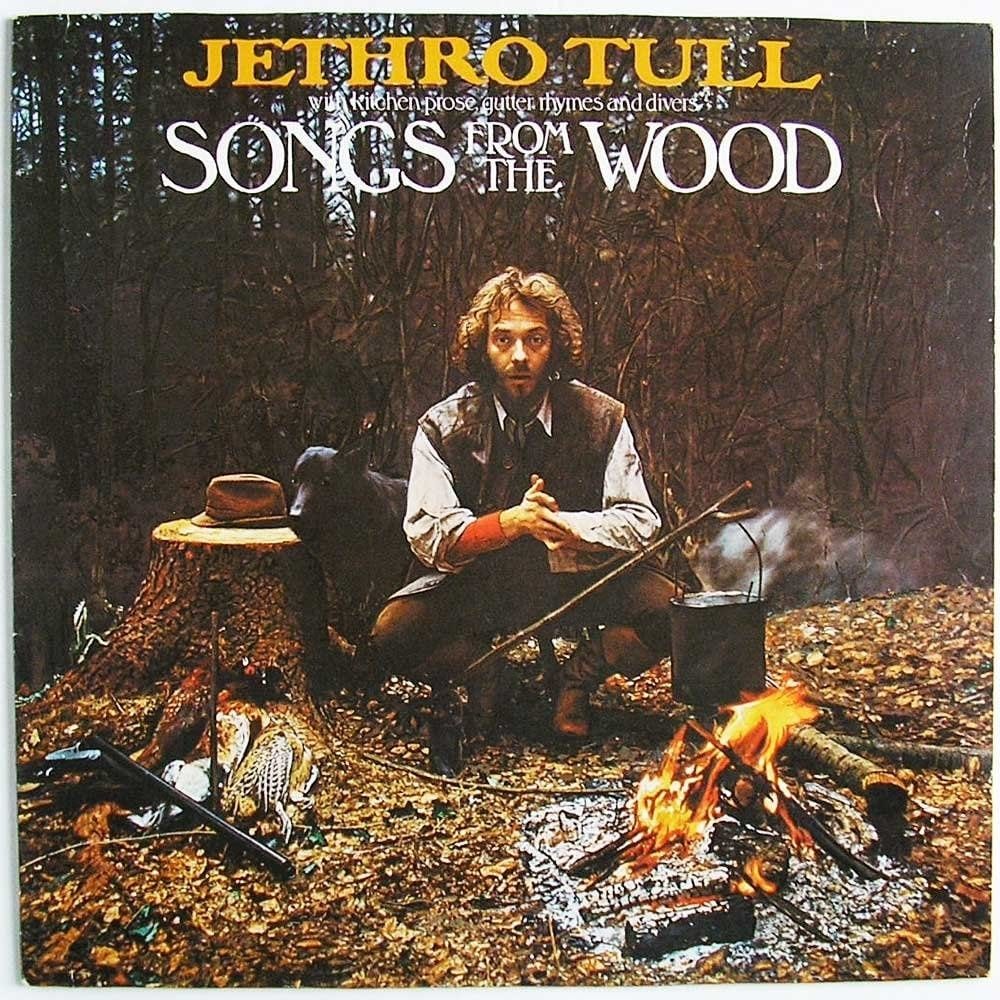
3. Aqualung (1971)
Jethro Tull’s fourth—and arguably most well-known—album, Aqualung, was a game-changer for several reasons. In addition to offering both softer and harsher temperaments in the midst of more varied and challenging compositions (marking their first proper foray into progressive rock territory), it also saw Anderson repeating unexpectedly weighty subject matter (including pedophilia, homelessness, and religion) between selections. Thus, Aqualung was a huge step forward intellectually, sonically, and commercially, and it still stands as their finest collection to date.
Just about everyone knows the magnitude of opener “Aqualung”—it’s a staple of classic rock radio—yet it’s still worth acknowledging how advanced it was in terms of lyrical and melodic intrigue, as well as polarized instrumental prowess (including a supreme guitar solo). This one alone signaled a palpable evolution from Benefit, and the subsequent entries maintained that growth. For instance, “Cross-Eyed Mary” directly connects to “Aqualung” while taking Anderson’s singing and Barre’s riffs to sinister new heights (as did “My God”); conversely, pieces like “Cheap Day Return”, “Wond’ring Aloud“, and “Slipstream” are sublimely introspective acoustic ballads whose faint orchestral touches enhance their somber loveliness. Add in the arena rock fervor of “Locomotive Breath” and you’ve got a highly distinguished sequence, to say the least.
Surely one of Aqualung’s most important and transparent deeds is how its second side deals primarily with a commentary on faith. In particular, the aforementioned “My God” expertly fuses fiery antagonism—including lines like “So lean upon Him gently / And don’t call on Him to save you / From your social graces / And the sins you used waive”—with theological chants, whereas “Hymn 43” offers a more straightforward rocker and dynamic closer “Wind Up” exudes the band’s light-heavy-light formula well as Anderson reflects on his own experiences, concluding, “You had the whole damn thing all wrong / He’s not the kind you have to wind up on Sundays”. Such personal and philosophical boldness, in conjunction with more ambitious arrangements, made Aqualung a profound development thematically and musically.
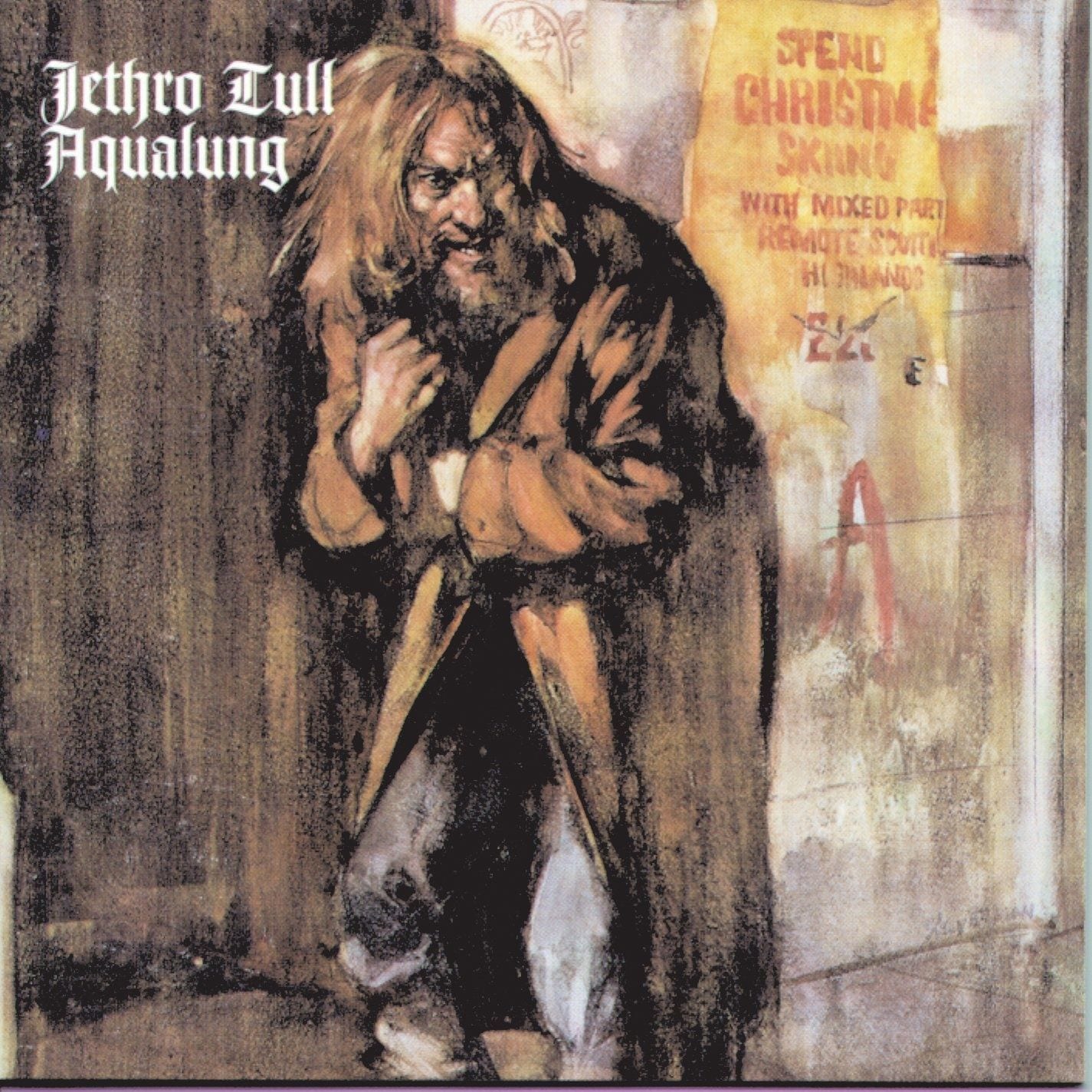
2. Thick as a Brick (1972)
Thick as a Brick is one of modern music’s best ironies. Initially conceived as a humorous response to both the self-indulgent nature of prog rock and the insistence that Aqualung was a concept album (which Anderson still refutes), Jethro Tull’s first full-length piece (clocking in at around 44 minutes) ended up being an utterly brilliant suite that housed all of those traits. In other words, in trying to ridicule the lofty pretenses of their peers, the band ended up surpassing them with one of the greatest works the genre has ever seen.
Physically, the record committed to its silly gimmick—that a fictional schoolboy named Gerald Bostock won a contest with his poem “Thick as a Brick”—by presenting itself as a newspaper from Bostock’s school, The St. Cleve Chronicle and Linwell Advertiser. (If only modern releases put so much effort into packaging.) Fittingly, it dealt with the troubles of English boyhood while offering wordplay both thoughtfully elegiac (“The do-er and the thinker / No allowance for the other / As the failing light illuminates / The mercenary’s creed”) and jokily clever (“Well, let me make you a present of song / As the wise man breaks wind and is gone / While the fool with the hour-glass is cooking his goose / And the nursery rhyme winds along”). Of course, all of it was delivered via some of the most attractive melodies in their catalog, so the songwriting alone was extraordinary.
As for the music, it would be far too extraneous to discuss it in detail. Suffice it to say, though, that every section is hypnotic and seamlessly linked, serving as a pinnacle example of how music can be simultaneously elaborate and enthralling. From the iconic opening stanzas—which have infiltrated pop culture via a car commercial and The Simpsons, among other instances—and sunny dispositions to its labyrinthine tangents (where every member earns a few ornate stints in the spotlight), Thick as a Brick never fails to mesmerize. It pushed Jethro Tull to their compositional peak whilst influencing the possibilities and boundaries of progressive rock for decades to come (including works like Echolyn’s Mei, Dream Theater’s Six Degrees of Inner Turbulence, Phideaux’s Snowtorch, and BTBAM’s Parallax II: Future Sequence). Consequently, it would definitely rank as their greatest achievement if not for its superior successor.
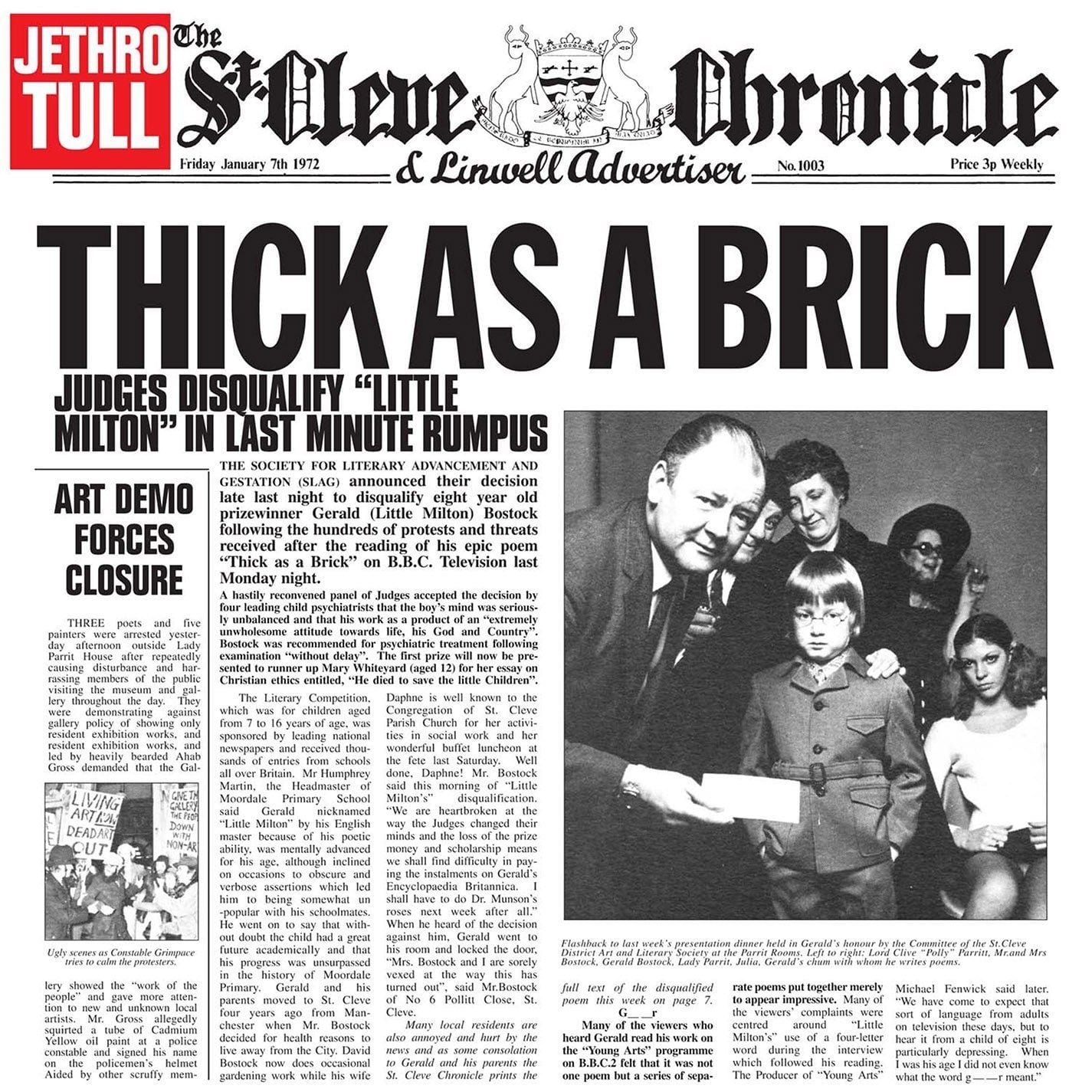
1. A Passion Play (1973)
Ian Anderson is nothing if not striving and resourceful, so it’s no surprise that he upped the ante with the sixth Tull record—and second 40-plus-minute composition—A Passion Play (which was originally going to be a double album whose discarded excerpts later appeared on the Nightcap compilation). As the Christian allusion of its name suggests, it revolves around a recently deceased man, Ronnie Pilgrim, who journeys into the afterlife, meets an assortment of characters as he wrestles with purgatory and purpose, and ultimately finds catharsis. Clearly, it’s a weighty listen.
Although it’s become more valued over the years (despite still being vastly underrated in general), the LP was mostly hated by critics and fans at the time for being too esoteric, bizarre, and self-indulgent. In actuality, those are exactly the traits that make it so outstanding. Far more ambitious, avant-garde, theatrical, and musically/cognitively demanding overall—and with more decorative physical components as well—A Passion Play made Thick as a Brick—as incredible as it is—feel like a warm-up by comparison.
Whereas Thick as a Brick is a superficially pleasing ride, A Passion Play requires deeper investment to fully appreciate its more dynamic, experimental, and scholarly voyages. Be it the subtly foreboding “Life Beats” (in which Anderson boomingly narrates over Pilgrim’s funeral), the ominously seductive “Critique Oblique”, the heartbreaking edge of “The Foot of Our Stairs”, or the intoxicatingly tricky chase of “Flight from Lucifer”, the work was on a whole new level in terms of lyricism, construction, and timbres. (Even its interlude—”The Story of the Hare Who Lost His Spectacles“—deserves acclaim for its fairytale creativity, as well as the superbly nuanced score beneath it all.)
In bucking expectations and pushing themselves further than ever (in every possible way), Jethro Tull achieved something truly special with A Passion Play. While every other album in their catalog is admittedly more welcoming and easily digestible, A Passion Play outdoes them all precisely because of how brazenly it commits to its boundless, unexpected idiosyncrasies and challenges its audience to comprehend its multilayered procession. Difficult? Yes. Ostentatious? Yes. Bizarre? Yes.
A work of genius? Absolutely.



![Call for Papers: All Things Reconsidered [MUSIC] May-August 2024](https://www.popmatters.com/wp-content/uploads/2024/04/all-things-reconsidered-call-music-may-2024-720x380.jpg)



